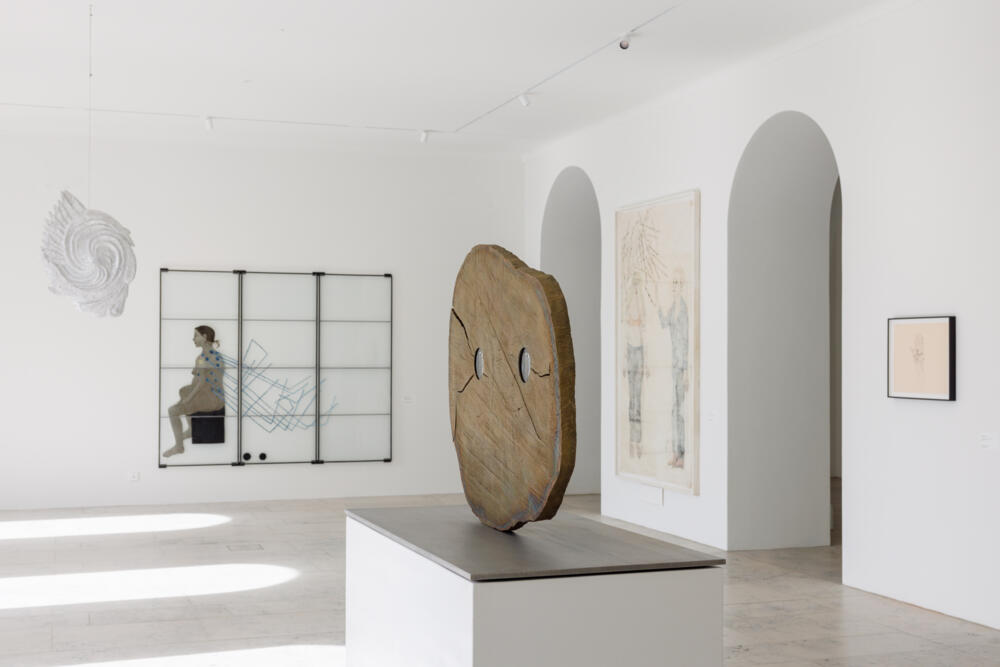The American artist Kiki Smith has long been intimately familiar with the Diözesanmuseum and its historical collections. She has traveled repeatedly from New York, where she lives, to work on the extraordinary project of a chapel. The chapel is dedicated to the Virgin Mary and is titled Mary‘s Mantle. On the occasion of the completion and blessing of this small house of worship, the Diözesanmuseum is also presenting a solo exhibition by the artist. Kiki Smith’s universe unfurls with outstanding works from the past two decades: sculptures of bronze and aluminum, paintings on glass with leaf gold, drawings on Nepalese paper, copperplate prints, collages, photographs, and Jacquard tapestries. The miraculous world of a serene nature stands next to images of dying and death, harmony and closeness next to suffering and violence. Humans, animals, and plants, animate and “inanimate” nature are all interwoven and in constant metamorphosis. “All the elements come together and fuse into a whole,” Kiki Smith says. Thus filigree flowers made of glass grow out of an open casket (Ashen, 2010), and blossoms and a human face are combined in the bronze floor sculptures (Flower Head I, II, 2012).
The more-than-six-meter-long collage of celestial constellations from the year 2013 of Noctua the owl, Corvus the crow, Hydra the water snake, and Filis the cat imagines in the Freising Hall the phenomena of the sky and their manifestations on earth. Stars of red glass (Mine, 1999) lie strewn on the floor, a silver sculpture Spiral Nebula (2017) floats down from the ceiling in the Munich Hall. Animals are everywhere in the exhibition as guardians of nature: birds drawn and collaged on Nepalese paper inhabit the arches around the atrium like emblems in cloisters; cat and bird are found in many friendly variations in watercolor and chalk on paper (Empath, 2022). A woman is integrated into the cosmos of stars, snake, and “seeing” plants in the tapestry Earth (2012), which is the motif of the invitation to the exhibition. A female figure appears as a “reminiscent” one painted on glass (Reminiscent, 2011) and nude, in gleaming aluminum, supported by bronze “crutches” (Red Standing Moon, 2003), or kneeling at a stake (Woman on Pyre, 2001).












